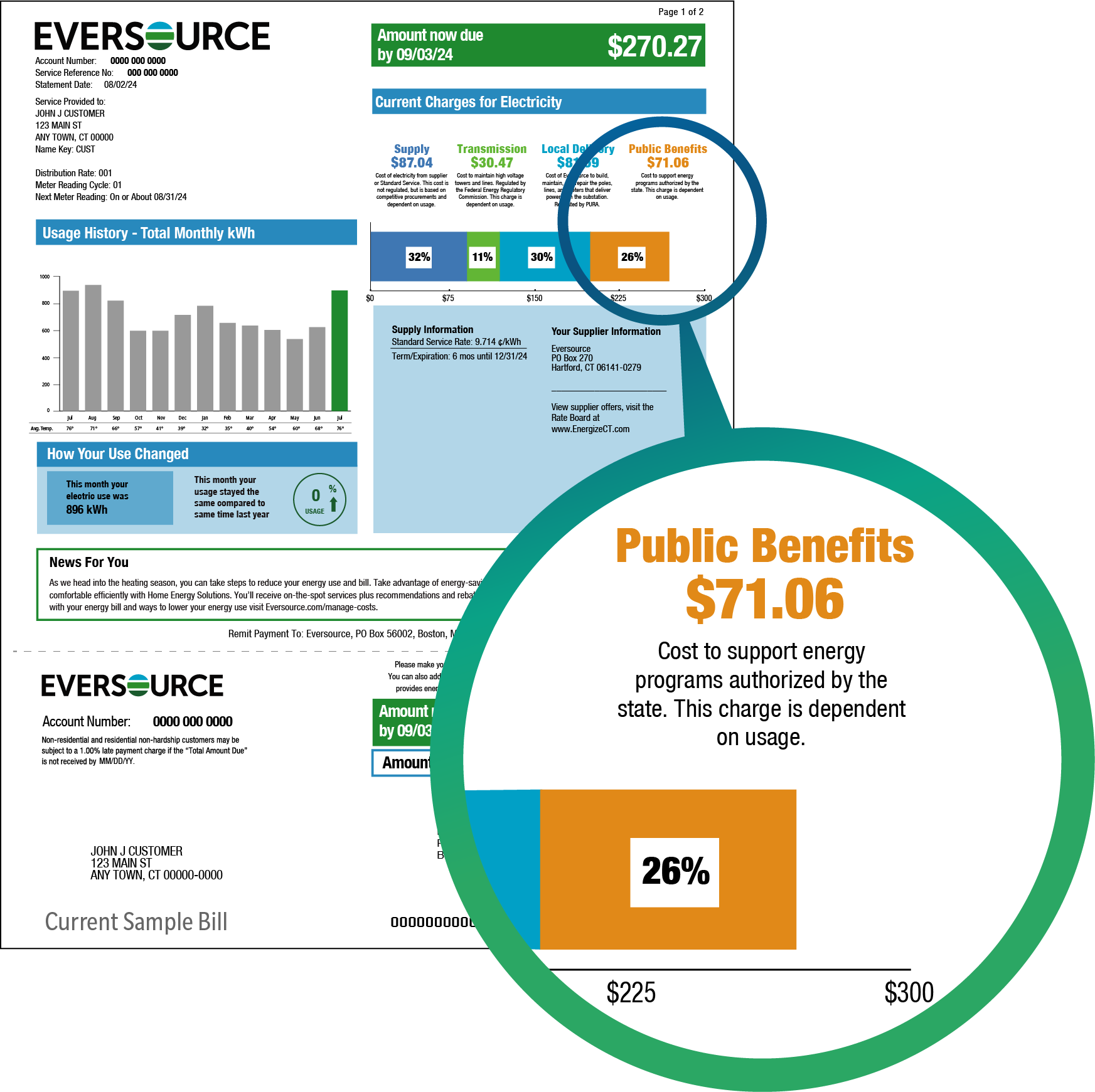Compare Bills Across Months and Years
See why you used more energy, if the bill period was longer and more.
Information on this page is for customers in
{{ town-name }}
Starting September 1, rates within the Public Benefits portion of your bill will decrease.
Even with lower rates, your bill ultimately depends on how much energy you use. Your electricity usage impacts the supply, local delivery, transmission and public benefits portions of your bill.
These tables show the impact of decreased rates within the Public Benefits portion of your bill from May to September, as well as how usage affects the amount you pay.
| May 1 Public Benefits charges $0.06075 x 700 | Sept. 1 Public Benefits charges $0.04601 x 700 |
| $42.53 | $32.21 |
| May 1 Public Benefits charges $0.06075 x 1100 | Sept. 1 Public Benefits charges $0.04601 x 1100 |
| $66.83 | $50.61 |
| May 1 Public Benefits charges $0.06075 x 1500 | Sept. 1 Public Benefits charges $0.04601 x 1500 |
| $91.13 | $69.02 |
To calculate what you will pay, multiple your usage by the Sept. 1 rate, kWh usage x .04601. See where to find your usage amount.
The Public Benefits section of your bill covers state-mandated and approved energy programs, policies and initiatives that we do not control.
Below is a sample bill for illustrative purposes only to show where Public Benefits can be found on the bill. It does not reflect regular rate changes.

The September 1 rate decrease is due to several factors, including shifting certain state-mandated policy and program costs off electric bills, a lower net cost of state-mandated power purchase agreements, and an expected lower cost for the Electric Bill Discount.
We support proactive measures by policymakers that reduce energy costs for our customers without sacrificing reliability, and we are consistently advocating for bill stability and predictability. We look forward to continued work with lawmakers to deliver cost-effective solutions, and those efforts include ensuring other savings outlined in Senate Bill 4 are achieved, such as the securitization of storm costs, which will deliver even more significant savings to customers in the long-term.
While we do not control these pass-through costs, we have options that can help those struggling to pay their bill.